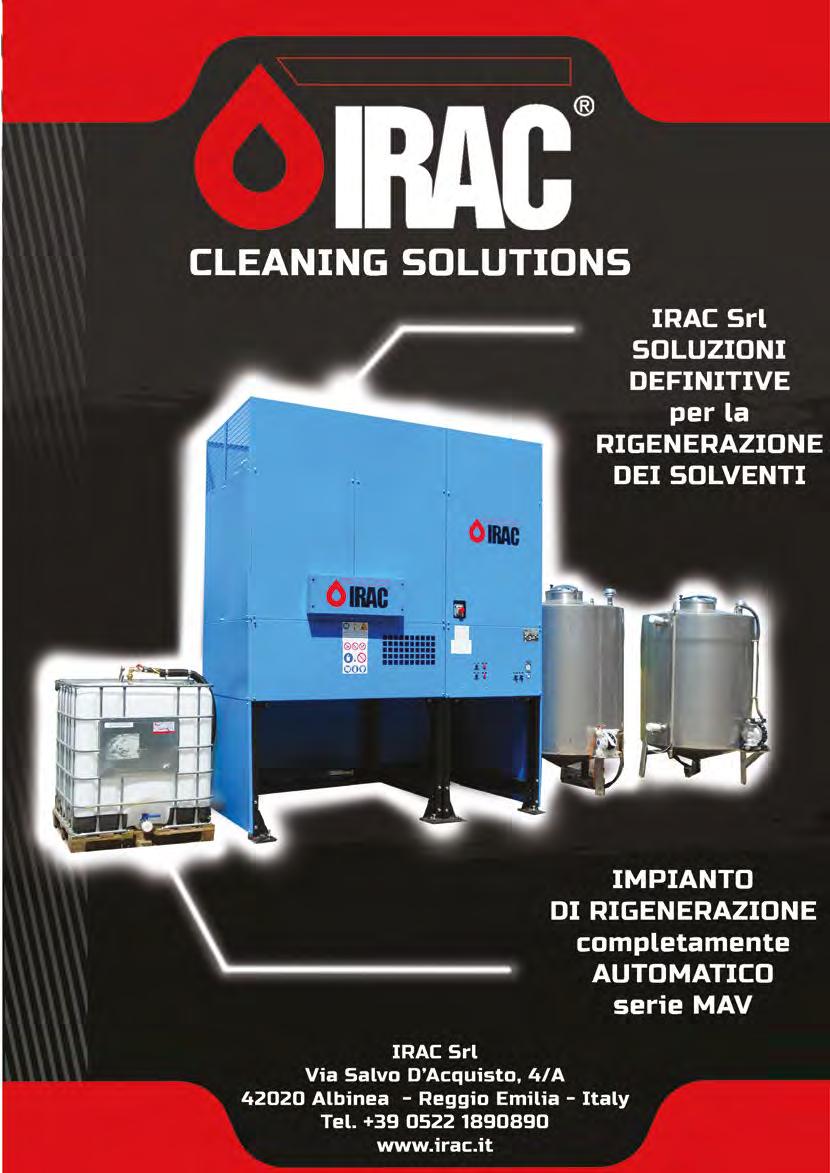WEBINAR A CURA DI EUROSAC E CEPI EUROKRAFT
di quelli che cre-
chael Sturges, Research Consultant dell’istituto di ricerca
scono, in Europa
svedese RISE, ha presentato fatti e cifre sulle caratteristi-
le foreste cresco-
che di sostenibilità dei sacchi di carta. «I sacchi di carta
no di 612 milioni
vengono fabbricati prevalentemente con fibre vergini pro-
di m3 all’anno –
venienti da foreste europee gestite in modo sostenibile»,
un volume suffi-
ha spiegato. Il sacco di carta medio europeo contiene
ciente per l’intera
più del 90% di materiale bio-based, molte soluzioni sono
popolazione mondiale. Come altro grande vantaggio
al 100% bio-based. Inoltre, la produzione di carta kraft
dei prodotti di origine forestale, Ringman ha evidenziato
da sacco è estremamente autosufficiente dal punto di
il loro potenziale di mitigazione del cambiamento clima-
vista energetico: il 77% di tutto il fabbisogno energetico
tico, che può aiutare anche altre industrie a raggiunge-
viene generato in loco. L’89% dei combustibili utilizzati è
re la neutralità del carbonio. Una delle più grandi sfide
rinnovabile.
che vede nell’insieme delle politiche che ruotano intorno
«L’industria ha costantemente ridotto l’impronta di car-
al Green Deal europeo: «Se le cose non fossero fatte
bonio fossile di un sacco di carta medio europeo», ha
nel modo giusto, potremmo esportare inquinamento
sottolineato Sturges. «Dal 2007 al 2018 è scesa del
e importare disoccupazione. Investiamo pesantemen-
28%». Se si includono le rimozioni e le emissioni biogeni-
te nella bioeconomia e alziamo l’asticella ancora di più
che di CO2, l’impronta di carbonio totale sarebbe addirit-
fissando obiettivi ambiziosi per i miglioramenti futuri e
tura negativa. «Questo significa avere un impatto positivo
sostenendo il Green Deal perché abbia successo».
sul clima e dimostra che i sacchi di carta hanno un ruolo reale da giocare nell’economia a bassa emissione di
SACCHI DI CARTA: UN IMBALLAGGIO SOSTENIBILE
carbonio», ha detto Sturges. In termini di riciclabilità, ha
Concentrandosi sugli attributi chiave del packaging so-
sono essere una fonte preziosa nell’industria del riciclo.
stenibile affrontati dalla legislazione – bio-based e rinno-
Come esempio di best practice, ha presentato il sistema
vabile, a basso contenuto di carbonio, riciclabile – Mi-
tedesco di raccolta e riciclo Repasack.
spiegato che le fibre di carta kraft lunghe e vergini pos-
La moderatrice Corinna Egerer con Jori Ringman e Michael Sturges / Moderator Corinna Egerer with Jori Ringman and Michael Sturges
ENGLISH Version
Meeting today’s and tomorrow’s challenges sustainably with paper sacks UNDER THE TITLE “MEETING TODAY’S AND TOMORROW’S CHALLENGES SUSTAINABLY WITH PAPER SACKS”, EUROSAC, THE EUROPEAN FEDERATION OF MULTIWALL PAPER SACK MANUFACTURERS, AND CEPI EUROKRAFT, THE EUROPEAN ASSOCIATION FOR PRODUCERS OF SACK KRAFT PAPER FOR THE PAPER SACK INDUSTRY AND KRAFT PAPER FOR THE PACKAGING INDUSTRY, HOSTED A TWO-PART LIVE WEBINAR SERIES. IT AIMED AT SUPPORTING PRODUCERS OF DRY POWDERY MATERIALS IN FINDING THE RIGHT HIGH-PERFORMANCE PACKAGING FOR A SUCCESSFUL GROWTH INTO THE CIRCULAR AND BIO-BASED ECONOMY SOUGHT IN THE EU
T
he first part of the webinar series, “The role of paper packaging in a circular bioeconomy”, discussed the importance of sustainable forest management and biobased materials such as paper for closing the loop and reducing emissions.
SUSTAINABLE AT HEART: EUROPEAN PAPER INDUSTRY Jori Ringman, Director General at Cepi, gave the bigger picture by presenting the achievements of the European paper industry and explaining how it can support other industries in achieving their sustai-
108 CONVERTER Flessibili - Carta - Cartone
nability targets. “We have a long track record of sustainability”, Ringman said. “Making sure that the resource is there for future generations has been the core for our success”. The European paper industry operates in an industrial symbiotic ecosystem, where nothing is wasted. With a recycling rate of 73.9% in 2020, it is the world champion in recycling. Also, it uses the highest rate of certified materials (75%) and leads in sustainable sourcing: 67% of fibres come from the circular economy, 33% from forest management operations such as tree thinning, and wood
rejected by sawmills. Moreover, Ringman stated that the sector is advanced compared to all other sectors in the reduction of CO2 emissions (–48% since 1990) and the use of bio-based energy (62%). Thanks to the key principle of harvesting less than is grown, forests in Europe grow by 612 million m3 per year – a volume large enough to fit the entire global population. As another major benefit of forest-based products, Ringman highlighted their potential to mitigate climate change – which can also help other industries in achieving carbon neutrality. One of the greatest chal-



























